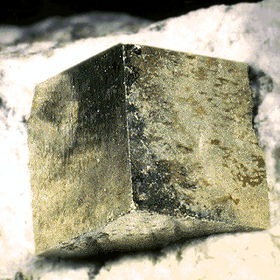Barite
Barite (BaSO4) is a white, colourless, gray, brown, yellow, blue or red mineral found in sedimentary, igneous and metamorphic rocks. It is composed of 65.7% barium oxide (BaO) and 34.3% sulphur trioxide (SO3). Commercial deposits of barite are classified as bedded, vein and cavity filling, and residual.
Because barite is heavy, soft, chemically inert and relatively inexpensive, its largest use is as a weighing agent in oil and gas drilling muds. Due to its light colour and brightness, it is used as a filler and extender, mainly in plastics but also in paints. It is also used as a filler in rubber and friction materials, and sound-deadening carpet backing. Since it absorbs gamma radiation, it is used as radiation shielding in concrete nuclear reactor buildings; pharmaceutical grade "high purity" barite is used as an X-ray contrast medium. Barite also serves as flux, oxidizer and decolourizer in glass making. Barium carbonate (BaCO3), an intermediate product, is used in the manufacture of TV and optical glass, ceramic glazes, porcelain enamels and ferrites.
The major grades of barite sold commercially are drilling mud, glass, paint and chemical (for the production of high purity barium sulphide [BaS] and barium carbonate). Drilling mud is the least expensive grade, and the chemical grade is the most expensive. Four barite mines are in operation in Canada, two in BC (mainly for drilling muds but also for paints), one in Ontario (for paints, plastics and lubricants) and one in Nova Scotia (for pharmaceuticals).

 Share on Facebook
Share on Facebook Share on X
Share on X Share by Email
Share by Email Share on Google Classroom
Share on Google Classroom


